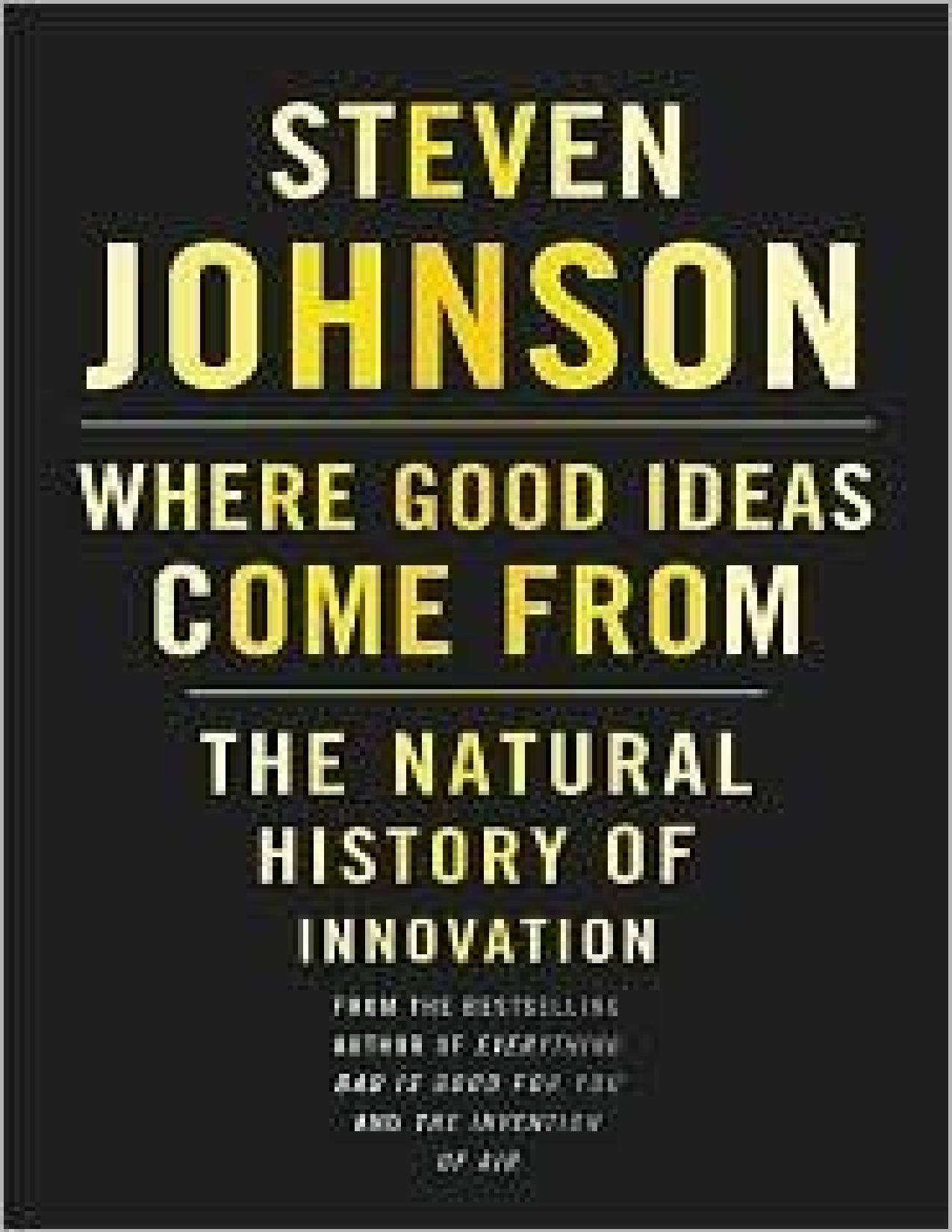Where New Ideas Come From: A White Paper for Engineering and Innovation
Introduction
Innovation is the lifeblood of progress in engineering and technology. Understanding the origins of new ideas is crucial for fostering creativity and driving innovation in any organization. This white paper explores the key insights from Steven Johnson's book "Where Good Ideas Come From: The Natural History of Innovation" and applies them to the context of engineering and innovation.
The Nature of New Ideas
New ideas rarely emerge in isolation or as completely novel concepts. Instead, they often arise from:
- Recombination of Existing Concepts: Most new ideas come from rearranging and reconnecting existing bits and pieces of knowledge1.
- The Adjacent Possible: Successful new ideas are often "just next door" to existing concepts, building on what's already familiar1.
- Gradual Development: The "Eureka!" moment is largely a myth. Most discoveries are the result of a long series of near-discoveries and incremental progress1.
Fostering Innovation in Engineering
To cultivate an environment conducive to innovation, engineering organizations should consider the following strategies:
- Encourage Networking: Most new ideas occur within networks of thinkers mulling over similar issues. Foster collaboration and knowledge sharing among team members1.
- Embrace Open Innovation: Private sector invention with knowledge hoarding is less effective than open networks where ideas are shared freely1.
- Create Diverse Teams: Ensure that each person in your organization brings a unique perspective. This diversity of thought is crucial for maintaining varied viewpoints and stimulating new ideas7.
- Promote Interdisciplinary Approaches: Encourage engineers to explore fields outside their immediate expertise. This cross-pollination of ideas can lead to innovative solutions7.
- Cultivate a Learning Organization: Adopt the principles of a learning organization, as described by Peter Senge of MIT-Sloan, to continuously adapt and innovate26.
The Role of Collaboration
Collaboration plays a crucial role in the generation of new ideas:
- Regular Meetings: Ground-breaking ideas often emerge during regular team meetings where researchers informally present and discuss their work4.
- Individual and Group Brainstorming: While group dynamics can sometimes stifle creativity, a combination of individual brainstorming followed by group sharing can be highly effective4.
- Cross-functional Teams: Bring together experts from different disciplines to tackle complex problems, fostering a multidisciplinary approach to innovation3.
Conclusion
Innovation in engineering is not about waiting for lightning to strike, but about creating an environment where ideas can flourish. By understanding the nature of new ideas, fostering collaboration, and embracing diversity of thought, engineering organizations can cultivate a culture of innovation that drives progress and solves complex challenges.
At IAS Research, we believe in the power of innovation to transform industries and solve multidisciplinary problems. By applying these principles, we continue to push the boundaries of what's possible in engineering and technology.
Citations:
- https://stevedenning.typepad.com/steve_denning/2010/10/does-it-matter-where-good-ideas-come-from-innovation-vs-creativity.html
- https://www.ias-research.com
- https://cgen.utoronto.ca
- https://becomingbetter.org/where-do-new-ideas-come-from/
- https://www.zoominfo.com/c/ias--researchcom/510555648
- https://www.ias-research.com/list-all-tags/deep-learning
- https://archives.obs-us.com/obs/english/books/nn/bd40196.htm
- https://innovation-res.eu
- https://www.ias-research.com/research



